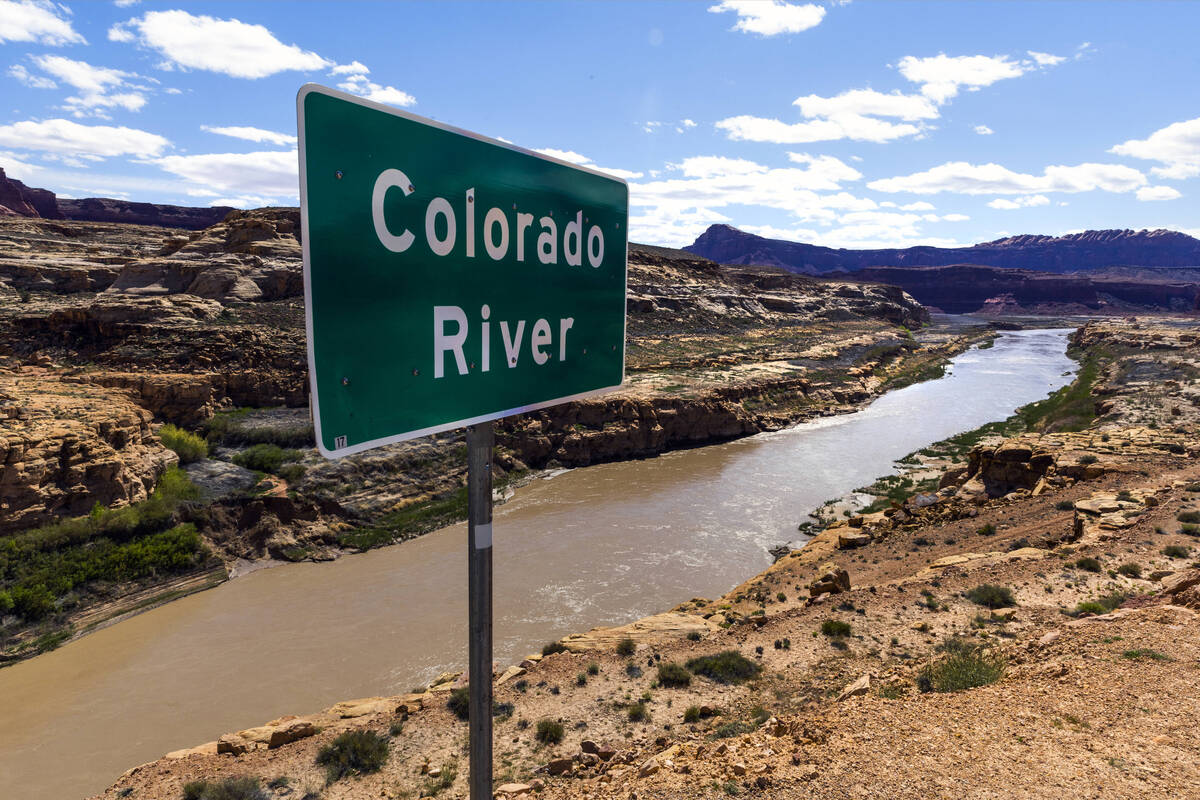No agreement reached on Colorado River cuts before deadline

Upper and Lower Basin states have filed dueling proposals to the federal government for how to distribute cuts in Colorado River water as the race to update expiring guidelines picks up before the end of 2026, both groups of negotiators announced Wednesday.
Ahead of the 2024 election and a rapidly approaching deadline for states to submit proposals to the Bureau of Reclamation, both regions have tried to advocate for their own interests over the past year.
The Upper Basin states — Colorado, New Mexico, Utah and Wyoming — have argued that they don’t have the benefit of storage from Lake Powell and Lake Mead, the two largest reservoirs in the U.S. The Lower Basin states — Arizona, California and Nevada — do have that luxury.
However, all around, reservoir levels have been low, and losses to evaporation continue to affect the whole Colorado River basin, on which 40 million people rely for water across seven states, Native American tribal lands and portions of Mexico.
In addition to the expiring 2007 river guidelines, both the interim plan approved by the Biden administration Tuesday and the 2019 Drought Contingency Plan will be null by the end of 2026.
Efforts for collaboration yielded no dice this time around, and the final decision will lie with Reclamation as to how to re-allocate water for the next 20 years following an environmental impact statement and more opportunity for public comment. A draft of the environmental impact statement is expected by December, negotiators said.
Low water availability sows division
The crux of the difference between the proposals comes down to sharing the responsibility of shortage.
Both regions agree that the Lower Basin states should deal with the 1.5 million acre-foot “structural deficit” among themselves, which accounts for water loss to evaporation and river transport. A typical home uses about 0.5 acre-feet of water per year, or approximately 150,000 gallons for their homes and lawns.
But rather than leave the onus of further water reductions only on the Lower Basin, the three Lower Basin states hope to see basin-wide cuts up to a maximum of 3.9 million acre-feet should the total system fall below 38 percent of its capacity.
The Lower Basin negotiators want Reclamation to consider more of the river system’s storage capacity when deciding on cuts — including much smaller, upstream reservoirs.
“Adapting to climate change is not just the responsibility of one state, or one basin, or just cities or farms,” California’s chief negotiator JB Hamby told reporters Wednesday. “Protecting the basin is a joint responsibility.”
The Upper Basin plan, however, argues that it already is experiencing water shortages that average 1.2 million acre-feet, largely because those states rely on snowpack alone instead of big reservoirs.
“Our water users face painful cuts nearly every year due to lack of available supplies,” Colorado Water Conservation Board official Amy Ostdiek said in a media briefing. “These shortages result in significant impacts on our water users’ lives.”
Also pertinent is how much water Reclamation will release from Lake Powell, the large upstream reservoir in Utah and Arizona. The volume of water released directly influences Lake Mead levels, meaning more water released is to the benefit of the Lower Basin states alone.
Until now, releases have been based on reservoir predictions rather than actual water levels. The Upper Basin plan suggests that Oct. 1 levels of Lake Powell determine how much water flows downstream, while the Lower Basin wants to base that on reservoir contents aside from Lake Powell and Lake Mead — a measure negotiators said accounts for losses the Upper Basin is worried about.
In a statement, Colorado River Commissioner Becky Mitchell, who negotiates on behalf of Colorado, said shortages are pervasive in the Upper Basin states.
“The focus must be on living within the means of the river,” she said. “We must all reduce our uses when Mother Nature does not provide.”
Uncertain effects for Nevada
Either way, Southern Nevada, which sources about 90 percent of its water from Lake Mead, likely will have to shoulder cuts to the region’s already-minute water resources.
Of the 1.5 million acre-foot structural deficit cuts proposed by the Lower Basin states, a presentation shown to reporters Wednesday predicted the smallest reduction — 50,000 acre-feet — for Nevada.
The state has the lowest portion of Colorado River water, but Las Vegas continues to make strides in curtailing excess water use through municipal programs enforced by the Southern Nevada Water Authority. The number for last year’s total water use in Nevada came in at 188,000 acre-feet.
The lack of a consensus between north and south is coming to a head at a critical time in river history, where climate change is continuing to exacerbate water loss.
University of Nevada, Reno professor Elizabeth Koebele, who studies Western water governance, said the lack of an agreement among all seven states wasn’t surprising, given what’s been reported about negotiations.
Though Reclamation will intervene, it’s not entirely clear how far legal challenges made by either basin could go or how long a consensus could be delayed by them, she said. But Koebele said she is hopeful that the public submittal of the alternatives will help shape the final agreement.
“We’ve seen the states repeatedly not be able to come to an agreement,” Koebele said. “Sometimes even having a formal idea of what both states would like to propose out on the table can foster those negotiations because everyone’s more aware of the stakes.”
Contact Alan at ahalaly@reviewjournal.com. Follow @AlanHalaly on X.